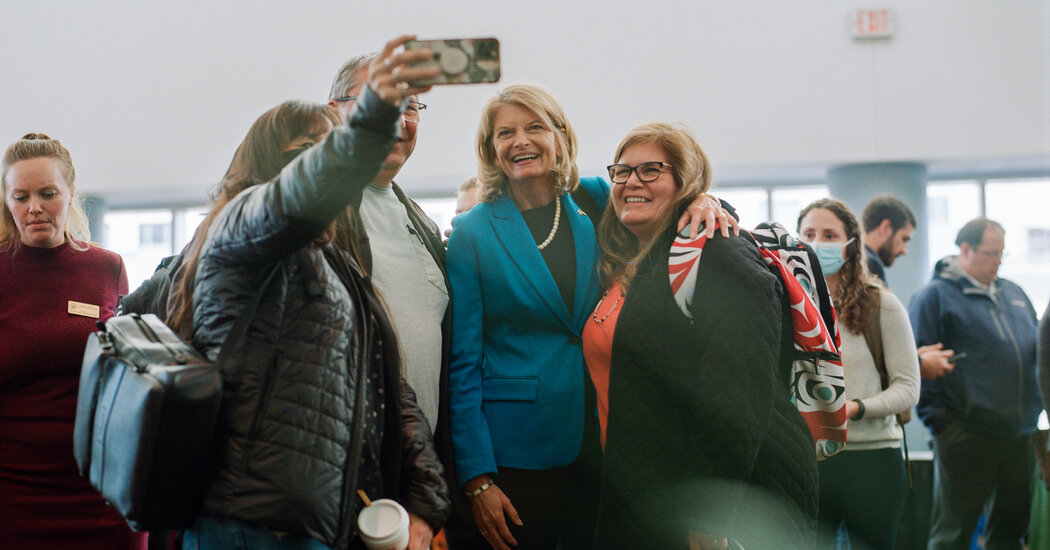Voters in Alaska on Tuesday will test for the first time a new ranked-choice system for a general election, in a special race for the state’s single H
Voters in Alaska on Tuesday will test for the first time a new ranked-choice system for a general election, in a special race for the state’s single House seat. And they will take part in the state’s new open-primary system, which was first deployed during a special House primary in June.
Alaska’s unique election system, which voters approved in a 2020 ballot initiative, changes how the state administers both primary and general elections. In primary contests, voters have the option to choose among all candidates in a race, no matter their party affiliations. Each voter will select just one candidate, but the four who receive the most votes will appear on the general ballot in November.
That new system could help Senator Lisa Murkowski, a three-term incumbent, weather Tuesday’s primary challenge from Kelly Tshibaka, a Republican attorney endorsed by former President Donald J. Trump, as both women could advance to the fall. Ms. Murkowski has been critical of Mr. Trump and his allies in Washington, calling on him to resign in the wake of the Jan. 6 attack on the Capitol and voting to convict him in his impeachment trial.
Ranked-choice voting, which applies to general elections only, could then prove critical to Ms. Murkowski’s electoral survival this fall. If both women both proceed to the general election but no candidate receives a majority of votes on Election Day, Democrats who include Ms. Murkowski somewhere in their rankings could give her a boost over Ms. Tshibaka in the final tally.
An early July poll by Alaska Survey Research showed Ms. Murkowski trailing Ms. Tshibaka initially but prevailing in the third round, after two Democratic candidates had been eliminated in a hypothetical general election contest.
Mr. Trump has criticized the system, calling it “a total rigged deal” at a rally in Anchorage.
“And you know who got it put in? Lisa Murkowski got it put in,” Mr. Trump said. He then claimed, “She knew she could not win a straight-up election. So she went for crazy ranked choice.”
But Ms. Murkowski did not publicly campaign for the ballot initiative, which voters narrowly approved. However, several of Ms. Murkowski’s allies, including a former adviser and a donor to a super PAC that supported her, backed the initiative, according to The Anchorage Daily News.
Also on Tuesday, voters will rank the candidates who want to serve the remainder of Representative Don Young’s term in order of preference. Mr. Young died in March.
Three candidates whom voters selected in a special primary earlier this year — two Republicans, Sarah Palin and Nick Begich III, and a Democrat, Mary Peltola — as well as some write-in candidates are competing to fill Alaska’s only House seat for just five months until Mr. Young’s term expires in January. A fourth candidate, Al Gross, finished in the top four but dropped out in June.
Voters may rank the three candidates in order of preference. If no candidate receives a majority, officials will eliminate the last-place finisher and reallocate his or her supporters’ votes to the voters’ second choices until one candidate has at least 50 percent.
Ranked choice was used first in federal elections by Maine in 2018 and more recently by New York City in municipal races, to mixed reviews.
www.nytimes.com
